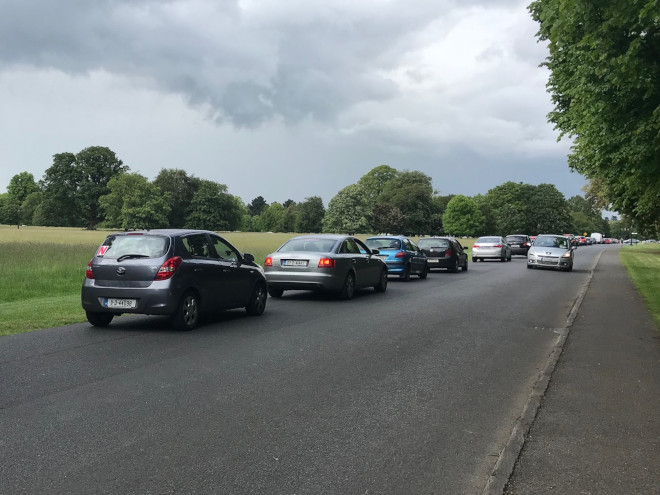Phoenix Park Parking Strategy Public Consultation
Fri, Jun 2, 2023
Read in 3 minutes
One of the key recommendations of the Phoenix Park Transport & Options Mobility Study (2021) is the development and implementation of a Parking Strategy. The OPW have recently sought to engage the public through a consultation on this Draft Parking Strategy. You can find a draft version of the Parking Strategy below, as well Neasa's contribution to the public consultation.

A draft version of the Parking Strategy can be found at this link.
Neasa’s comments as part of the public consutlation were made in conjunction with Cabra-Glasnevin Area Rep Feljin Jose, Cllr. Michael Pidgeon and Cllr. Janet Horner.
Comments on the Draft Parking Strategy
1. Phoenix Park shuttle service
1.1 Integrated bus
We appreciate that a more comprehensive service was planned as part of the Phoenix Park mobility plans but that this was not possible due to the historic nature of the gates.
There is a balance to be struck between running a bus service through the park and ensuring that the park does not become a primary route for the bus network (as it currently is for private cars).
There would be huge value in having a bus service that serves the park and is better integrated with the bus network. We believe there is value in looking at a northwest to city route that would have a limited number of buses that go through the park.
1.2 Schedule
We note based on a response from the NTA that:
“The Authority and Dublin Bus are progressing with plans for a Phoenix Park shuttle service, which is proposed to operate from 0900hrs to 1800hrs between Parkgate Street and along Chesterfield Avenue to the Phoenix Park Visitor Centre at a 30 minute frequency.”
While we appreciate that this is a trial we feel that both the frequency and the operational hours could be improved. We feel in the summer months that a service later into the evening would be well received.
In terms of frequency a rolling service might be a better option. Obviously driver breaks are required but a service where there is a short dwell period at each stop and otherwise the bus is in motion would ensure that passengers would never have a significant wait time at either stop.
2. Pedestrian facilities
One opportunity to reduce the car parking requirement in the park is to make walking easier. From various conversations we have have with users of the park the following would be beneficial:
- Benches to provide rest points
- More toilet facilities
- Lighting for winter months - we appreciate that this would need to be done in a biodiversity friendly manner as has been done internationally
- Continued upkeep of the footpaths
- Pedestrian crossings especially on Chesterfield Avenue
3. Car parking
3.1 Accessible spaces
The increase in the number of accessible parking spaces and introduction of Age-Friendly Car Parking is very welcome. There are some people who need a car to access the park. Parking spaces should be available for such park visitors.
3.2 Additional car spaces in the park
3.2.1 Fundamentally we would like to see fewer parking spaces in the park. Every additional space added will be very difficult to remove at any point in the future. Additional parking spaces will simply induce demand for private car traffic into the park.
3.2.2 Where parking is added in the park the preference is better use of existing car parks so the various upgrades done in this regard are welcome.
3.2.3 Temporary car parking - it’s unclear in what way this is temporary. There are no criteria for the cessation of this parking. What seems to be proposed here is additional seasonal parking every summer. The OPW should clarify when this space will be returned to the park on a permanent basis.
4. Increased cycle parking provision within the Park.
The type of cycle parking provision is very important
- Sheffield stands or equivalent so that bikes can be sufficiently secured
- Secure from theft - high degree of passive surveillance and if necessary CCTV surveillance
- Parking for cargo bikes.